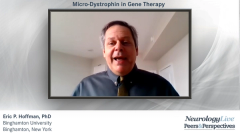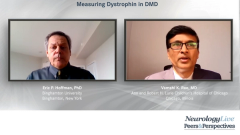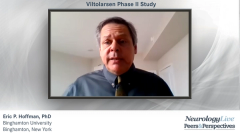
Casimersen in the Clinical Setting
Recent approval of casimersen, its administration, efficacy, safety, and patient selection for treatment of Duchenne muscular dystrophy.
Episodes in this series

Vamshi K. Rao, MD: There’s a new kid on the block: casimersen. It’s an approved exon 45 skipping drug. It has a very similar mechanism of action in terms of the whole concept of a PMO [phosphorodiamidate morpholino oligomer] with the synthetic chain that skips through exon 45 amenable mutations. Administration is very similar. It’s proven to be very safe. It has also shown dystrophin production, leading to benefit. Like you said, it remains to be seen how efficacious it is over time in relation to real-world evidence or post-marketing.
With casimersen, we’re very happy that we now have another drug that targets a certain group of children, I believe in the 6% to 8% range. As you alluded to earlier, exon 51 amenable is around 10% to 12%. Both exon 53 and exon 45 are in the 6% to 8% range. Is there anything that caught your eye with casimersen that was different from the previous exon skipping drugs?
Eric P. Hoffman, PhD: As you point out, it seems very similar. I was reading the FDA label yesterday, and the amount of drug-induced dystrophin, about 1%, is similar to the other Sarepta Therapeutics drugs. It seems that the delivery, dosing, and the 1% drug-related increases in dystrophin are all very similar between the 3 Sarepta drugs.
Vamshi K. Rao, MD: Thank you for pointing that out. Again, I left the number out.
I thank all of you for watching this NeurologyLive® Peers & Perspectives®. If you enjoyed the content, please subscribe to our newsletters to receive upcoming programs and other great content in your inbox. Thank you.
Transcript Edited for Clarity
Newsletter
Keep your finger on the pulse of neurology—subscribe to NeurologyLive for expert interviews, new data, and breakthrough treatment updates.






























